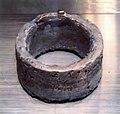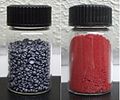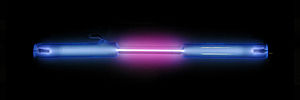68 (erbium) isotopes, and the primary products after are element 70 (ytterbium) isotopes. Thulium-169 is thulium's only primordial isotope and is the only...
28 KB (3,272 words) - 02:38, 16 August 2024
Plutonium (section Isotopes and nucleosynthesis)
to power some spacecraft. Plutonium isotopes are expensive and inconvenient to separate, so particular isotopes are usually manufactured in specialized...
139 KB (14,981 words) - 08:15, 9 November 2024
Praseodymium (section Isotopes)
isotopes lighter than 141Pr is positron emission or electron capture to isotopes of cerium, while that of heavier isotopes is beta decay to isotopes of...
37 KB (4,830 words) - 15:05, 16 September 2024


























